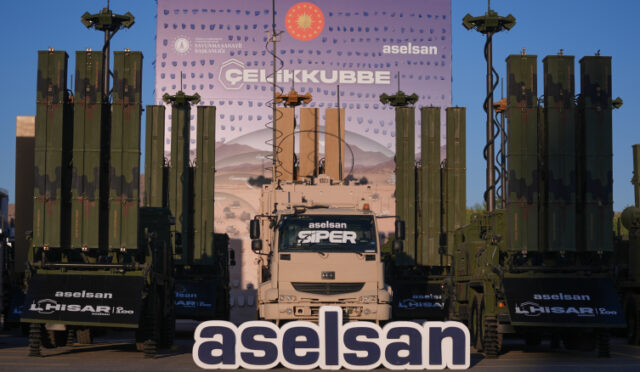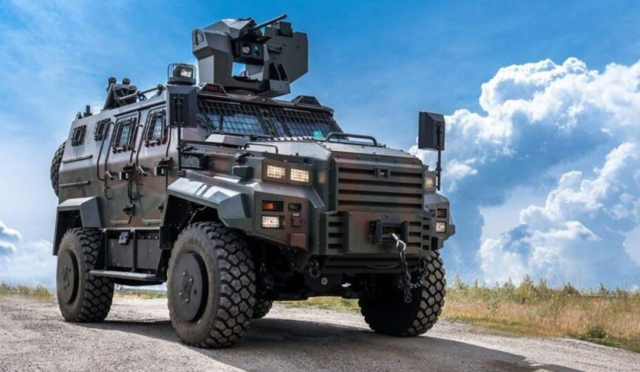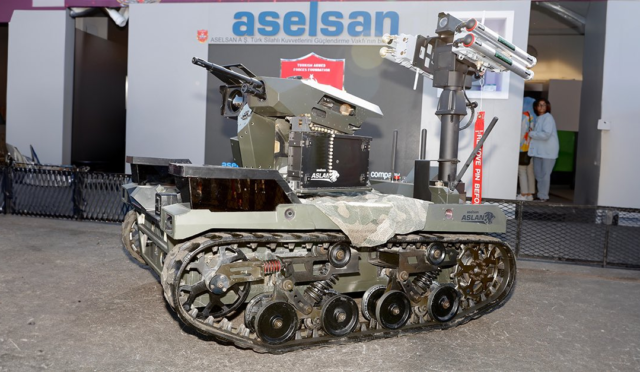In a major leap for its defense technology sector, Türkiye has unveiled and successfully tested the YILDIRIM-100, a directed infrared countermeasure (DIRCM) system developed by ASELSAN. The system, designed to protect helicopters and other airborne platforms from infrared-guided missile threats, places Türkiye among a select group of nations capable of producing such advanced self-defense technology.
A recent test video released by ASELSAN showed the YILDIRIM-100 in action, neutralizing a simulated infrared-guided missile in a high-stakes scenario. The system, which operates by directing a high-powered laser at the seeker head of an incoming missile, effectively blinds the weapon and causes it to lose track of its target.
“Imagine shining a laser directly into the ‘eye’ of an incoming missile, causing it to become disoriented and spiral aimlessly,” said defense analyst Kubilay Yıldırım, describing the system’s core function.
“It’s a deceptively simple concept, but engineering such a system is extraordinarily complex. Detecting a missile, tracking it with precision, and simultaneously directing a laser pulse at the correct wavelength—while mounted on a vibrating helicopter platform in extreme temperatures—is an immense technical challenge.”
A New Era for Turkish Military Aviation

Türkiye has long invested in advanced self-protection systems for its helicopters, beginning in the late 1990s with the procurement of German-made missile warning sensors. Over time, ASELSAN acquired licensing rights and began domestic production of these systems. Since then, Turkish helicopters have been equipped with a variety of electronic warfare capabilities, including radar warning receivers, radio-frequency jammers, and mission-specific software suites.
“Today, Turkish Army Aviation platforms are on par with the world’s leading militaries in terms of survivability,” said Yıldırım. “And much of the technology is now locally developed.”
The YILDIRIM-100 adds a critical final piece to this puzzle—what Yıldırım calls “the diamond atop the crown.” The system represents Türkiye’s first domestically produced DIRCM solution, a technology previously mastered by only a handful of countries, such as the United States, Israel, and Russia.
How YILDIRIM-100 Works
DIRCM systems like YILDIRIM-100 function by detecting incoming infrared-guided missiles using onboard sensors. Once a missile is identified, a tracking system locks onto the threat and activates a laser that disrupts the missile’s seeker head, causing it to veer off course and ultimately crash.
What sets YILDIRIM-100 apart is its compact size, operational reliability, and ability to function autonomously in real-time without pilot intervention. According to Yıldırım, the system is ruggedized to operate across a wide temperature range—from -25°C to +55°C—and is effective even against man-portable air-defense systems (MANPADS), which are notoriously difficult to counter.
Integration Across Air Platforms

While initially developed for military helicopters, ASELSAN’s YILDIRIM-100 is expected to be integrated into a broader range of air platforms, including military transport aircraft, UAVs, and even fighter jets.
Yıldırım emphasized that advanced DIRCM systems are no longer optional but essential, particularly in high-threat regions such as the Aegean or Middle East, where heat-seeking missiles pose a serious risk. He also revealed that a more advanced variant of the YILDIRIM-100 is planned for integration into Türkiye’s fifth-generation fighter jet, the National Combat Aircraft (KAAN).
“In areas with dense missile threats, the only realistic countermeasure is a DIRCM system,” Yıldırım said. “It’s no longer a luxury—it’s a necessity.”
With YILDIRIM-100, Türkiye signals its arrival as a top-tier player in defensive electronic warfare technology. The system not only boosts the survivability of Turkish air platforms but also showcases the growing maturity and self-sufficiency of its defense industry.







